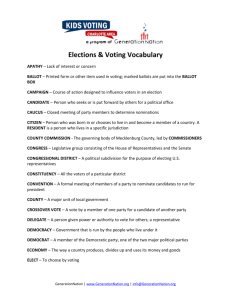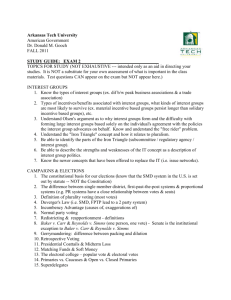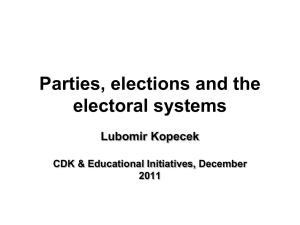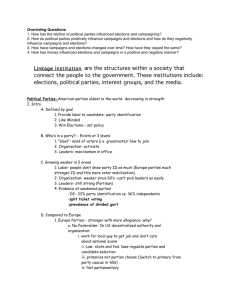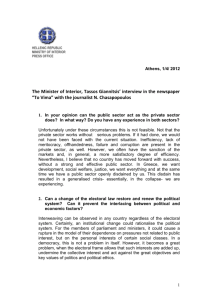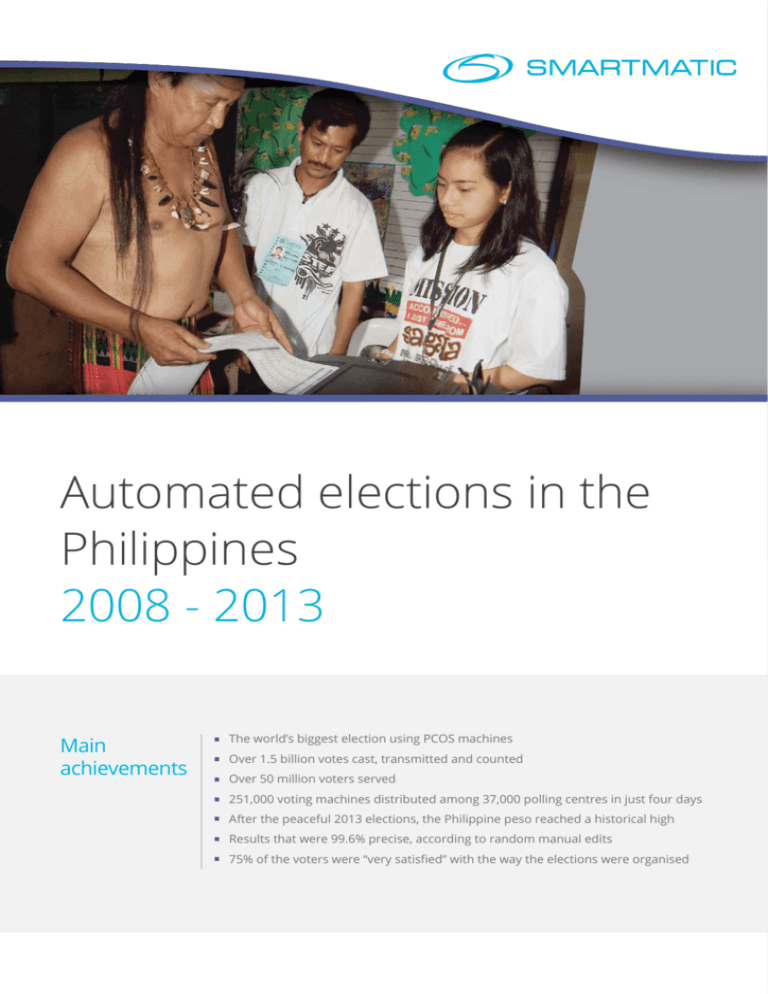
Automated elections in the
Philippines
2008 - 2013
Main
achievements
The world’s biggest election using PCOS machines
Over 1.5 billion votes cast, transmitted and counted
Over 50 million voters served
251,000 voting machines distributed among 37,000 polling centres in just four days
After the peaceful 2013 elections, the Philippine peso reached a historical high
Results that were 99.6% precise, according to random manual edits
75% of the voters were “very satisfied” with the way the elections were organised
Automated elections in the Philippines 2008-2013
Context
Before automation, voters in the Philippines had to wait several weeks to discover their election results. For example,
in the 2004 Presidential election, it took 40 days to manually count all the votes and announce the winner. Such
prolonged periods of uncertainty often fuelled unrest, accusations of fraud and even violence.
In 2007 the Congress of the Philippines sought to remedy these problems by automating the elections. The Elections
Commission (COMELEC) chose Smartmatic as the provider to bring greater transparency, credibility and accuracy to
the country's electoral processes.
Since winning complex bidding processes in 2008, Smartmatic has remained the provider of choice. Having cast 1.5 billion
votes using our technology, the Philippines has become a worldwide reference for well-run elections.
Projects
To date, Smartmatic has participated in the following projects in the Philippines:
2008 Elections in the Autonomous Region in Muslim Mindanao (ARMM)
2010 General Elections
2013 Midterm Elections
Scope
The biggest elections in the world using optical scanner machines, and one of the most complex since they took place in an
archipelago of 7,107 islands.
Three
elections
7,107
islands
37,000
polling
centres
> 50
million
75%
of voters
251,000
pieces of
electoral
equipment
“very
satisfied”
voters
99.6%
160,000
> 1.5
billion
votes cast,
transmitted
and tallied
candidates
36,000
officials
elected
accuracy
of results
Services and technology
The election process
PRE-ELECTION
PROJECT MANAGEMENT& AUDITING
ELECTION
PROJECT MANAGEMENT& AUDITING
POST-ELECTION
PROJECT MANAGEMENT& AUDITING
This diagram illustrates how we add value throughout the electoral process. The combination of our advanced
technology, unique services and field-tested project management methodology can make each of the stages of an
election more transparent, auditable and efficient.
Automated elections in the Philippines 2008-2013
Services
Project management
Our unique project management methodology was the key to ensuring the success of two
huge, complex elections. Each involved the following: 50 million voters, 85,000 candidates,
17,000 positions to choose from, over 82,000 counting devices, and 37,000 centres vote in
an archipelago of 7,107 islands.
National Support Center (NSC)
To guarantee successful elections, we ran the National Support Centers (NSC) for each election.
Workers in the NSC provided crucial support to staff in the field, should they need it. They
also monitored the status of deliveries and all polling and aggregation operations, including
technician and supervisor attendance.
Legal framework analysis
We offered advisory services to the Philippines that included analysing the laws, rules
and procedures associated with its electoral process in relation to the implementation of
election technology.
Polling location management
AUDITS
We used our Elections-360 and EMS software to help the authorities identify, record and
evaluate more than 36,000 suitable polling stations. Committed to making elections
accessible to all, we also enabled Filipino voters living in Hong Kong and Singapore to vote.
Staff management
We coordinated around 60,000 people temporary employees to provide support before and
during each automated election. The use of our Election-360 software allowed authorities
to organise and monitor all the activities carried out by these people.
Candidate administration
The elections of 2010 and 2013 alone attracted over 80,000 candidates, all of whom needed to be
registered and vetted (along with their parties). Our EMS software allowed us to manage these
tasks transparently, efficiently and rigorously. It also allowed for complete transparency in party
financing.
Ballot production
Well-designed and well-printed ballots are crucial to the success of any election. The national
elections in the Philippines required 50 million ballots, featuring 17,000 different layouts.
We were able to meet this challenge with the use of our EMS software, that allowed for the
quick and easy ballot definition and generation.
Training
We recruited, screened and trained around 60,000 field support workers for the 2010 and
2013 elections.
Logistics
AUDITS
Producing, storing, distributing and withdrawing 251,000 pieces of equipment in, from, to
and across 48,000 stores, 36,000 polling stations and 7,107 islands -on time and under
tight security restrictions. All of this was only possible thanks to our project management
and our EMS software, which helped coordinate production and shipment.
Voting
In response to requests from our client, we have offered electronic voting and electronic
counting. In total, we’ve checked over 1,500 million votes in the Philippines. Voters
scanned their ballots with our SAES-1800 optical scanners. See ‘hardware’.
Consolidation
To transmit results, we integrated the country’s leading telecommunication networks. But
as they only covered 65% of all polling stations effectively, we also deployed 5,500 mobile
BGAN satellite antennas and 680 VSAT antennas nationwide. Our REIS software allowed us
to count 1,500 million votes as they came in from 1,700 different locations and publish
them. For maximum transparency, we also published official results online in real time.
Audits
We’re the only electoral technology company that insists that all parties audit the process
before, during and after the election. All our voting technology and services have been
designed around this fundamental principle. In the Philippines, we conducted lab tests,
field tests, mock votes and a source code review.
Automated elections in the Philippines 2008-2013
Infrastructure
Data centres
Conceived with a fail-safe, efficient and secure design, our data centres allowed staff to
monitor the voting platform and provide help desk services to COMELEC, the candidates
and parties, as well as to the press and observers.
Transmission platform
We secured reliable telecommunication services to transmit electoral data by integrating
resources from the Philippines’ main telecommunications companies. In 2013 we deployed
48,000 modems and 46,000 SIM cards for direct transmission. In areas with little or no cellular
coverage, we deployed 5,000 BGAN mobile satellite antennas and 480 VSAT antennas.
Hardware
SAES-1800
Optical scanner unit designed to register and tally the votes marked on electoral ballot
papers. Completely auditable, secure and accurate, it encrypts votes for storage and
transmission. We’ve deployed over 80,000 scanners for each national election.
SAES-4000
Touchscreen voting machine with state-of-the-art encryption algorithms that ensure 100%
security and accuracy. A built-in printer produces auditable voter receipts.
Software
Elections-360
Elections-360 provides real time control, monitoring and management of election logistics
and operational processes - from resource planning and electoral material dispatching to
incident reporting and technical/procedural support. In the Philippines, the National Support
Center (with 600 operators) used Elections-360 to control all processes and monitor all
issues reported from over 60,000 field operators.
Real-Time Electoral Information System (REIS)
REIS receives and monitors electoral information from all voting machines before tallying
the votes and awarding a winner. In the Philippines, deployment spanned 1,700 geographic
locations. In the three elections we’ve conducted in this archipelago, REIS has allowed
processing more than 1.5 billion votes in record time.
Election Management System (EMS)
EMS is our solution to configure any type of automated election, simply and accurately.
This system was a key tool that helped us conduct elections in the Philippines. It helped
configure a variety of important tasks, including registering 85,000 candidates, the design
and print of 50 million ballots with 17,000 different layouts, the identification and
evaluation of 37,000 polling stations for each election, inventory control, and the distribution
of more than 250,000 pieces of hardware.
Online results system
Following a request from Comelec, we developed an online results system to make information
available in real time. Letting all stakeholders know results as they were being processed
was an effective measure to enhance transparency in the Philippine elections.
Continent: Asia
Country: Republic of the Philippines
Estimated population: 98 million
V
V
Government type: Unitary Presidential
Constitutional Republic
Administrative division: 80 provinces
and 138 cities
About Smartmatic
We focus on creating technology and offering services that have a profound social impact. By helping governments conduct more
transparent and efficient elections, we have processed over 2.3 billion auditable, secret and secure votes in more than 3,500
fraud-free elections. Our innovative practices to improve electoral management have made us the leader of the electronic voting
industry worldwide in terms of product offering, geographical presence and technological advancement.
We employ over 800 people in the US, UK, Netherlands, Mexico, Barbados, Haiti, Brazil, Panama, Venezuela, Philippines, India and
Taiwan.
www.smartmatic.com
Copyright © Smartmatic. 2000 - 2014. All rights reserved.



